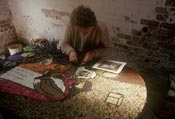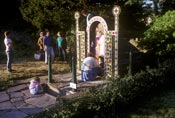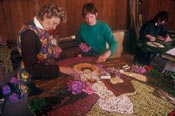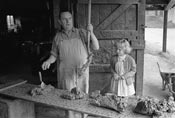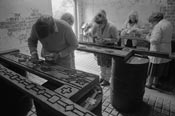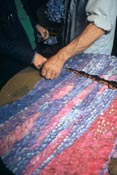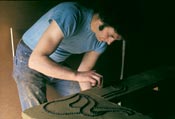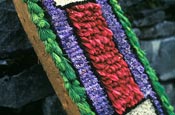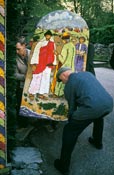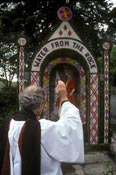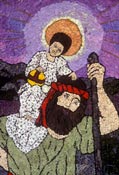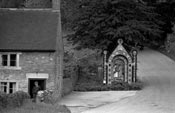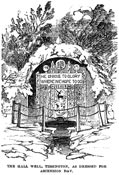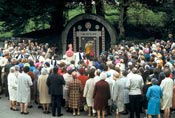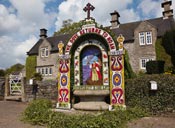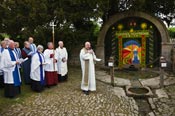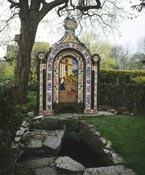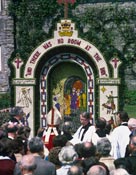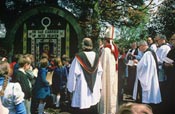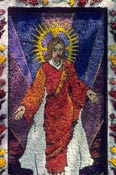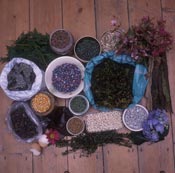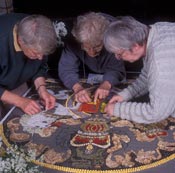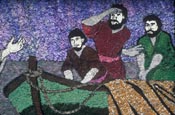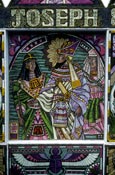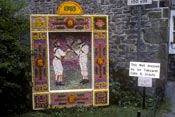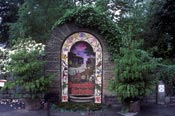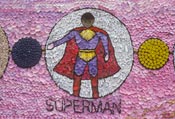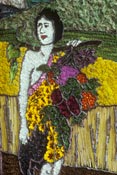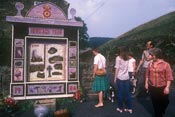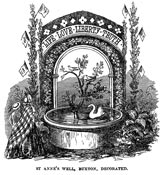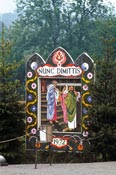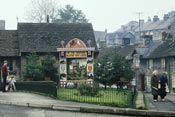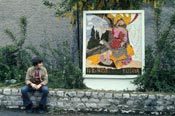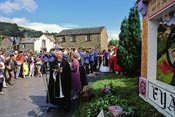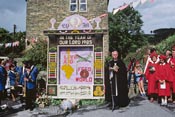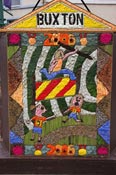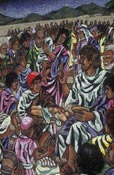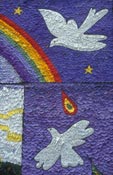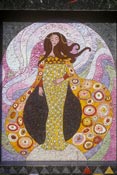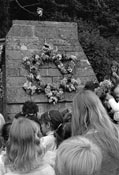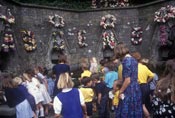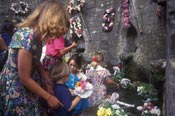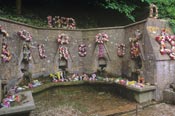
Whatever anyone else might claim, well dressing in the Peak District is among the biggest success of the folk custom scene in the British Isles. The tradition of giving thanks for pure clean water goes back for ever, the particular method of giving thanks in Derbyshire ‘is only supposed to go back as far as 1350’, according to eminent folklorist Christina Hole. She was referring to Tissington, scene of many of our pictures, but our engraving of Hall Well goes back a mere 150 years. That well looks exactly the same today. A book published in 1985 stated that there were 28 villages dressing their wells. A 2006 book said there were ‘over eighty’. Google on 9 June 2011 listed 104. What makes the custom doubly successful though, is that it is all due to regular Derbyshire folks and not ‘professional folkies’.
There other ways of dressing wells, of course, with garlands, elaborate flower arrangements or clooties, but the Derbyshire method is a unique mixture of traditional folk art, imagination, serious communal craftsmanship and pride. As you can see from the pictures each well is surrounded by a structure of decorated ‘boards’. These vary from place to place and from well to well, but each well keeps to its own standard configuration, for obvious practical reasons. Some are just a single board. Some ‘wells’ aren’t wells but public village taps, or indeed don’t exist at all. However, the basic method remains more or less the same for all. The design is worked out and agreed upon over the preceding weeks, maybe months. Until 20/30 years ago these were invariably religious, or at least worthy, but they are becoming more secular each year. Designers range from the completely untutored who might copy a picture out of a book to professional artists who might happen to live in the village. Abstract expressionism can not be far off. Minimalism will never happen. The design is then carried out on wooden boards studded with nails and covered with half an inch of clay.
The boards are soaked in water for about a week – if they were dry they would absorb the water in the clay, which would crack and fall to pieces. Meanwhile the clay is dug up and then ‘puddled’ to a dough-like consistency, with a seasoning of salt to keep it moist. About five days before Well Blessing the boards are taken out of the pond (or whatever) and the clay is spread on them. The designer now takes control and supervises the rest of the picture making. The ‘outlines’ of the picture are pricked through paper onto the clay. ‘Outlining’ follows the pricked lines and can be with alder cones, bark, maize, twigs, anything which makes bold lines. Tissington use coffee beans donated by a local Nestlé factory. The lines are now ready for filling in by a communal team of ‘petallers’, usually with flower petals, laid into the clay like roof tiles so that the rain will run off, but colours and textures can be created by all sorts of natural materials, such as moss, lichen, fluorspar, whole flowers, berries, straw, wheat, reed, leaves, eggshells, you name it. Usually manufactured objects are banned. Later they will all visit each other’s well dressings for no other reason but to find and denounce transgressions. When the boards are complete they are assembled around the well, with much anxiety since they are easily damaged. All well dressings are blessed the next morning, with varying amounts of ceremony according to which village they are in, and will stand for up to a week, according to the weather. Too wet and they rot, too hot and dry and they wither up, too windy and they get blown to bits. It is a wonderful and charming tradition and it is possible to see dressings at least somewhere in the Peak District between May and September. It is easy to find out dates and places on Google. In 1983 Collections managed to get around eight villages (22 wells) in a single day. Bisley in Gloucestershire has a completely different style in which children from the local school hang up garlands on the grand Victorian well, on Ascension Day.
